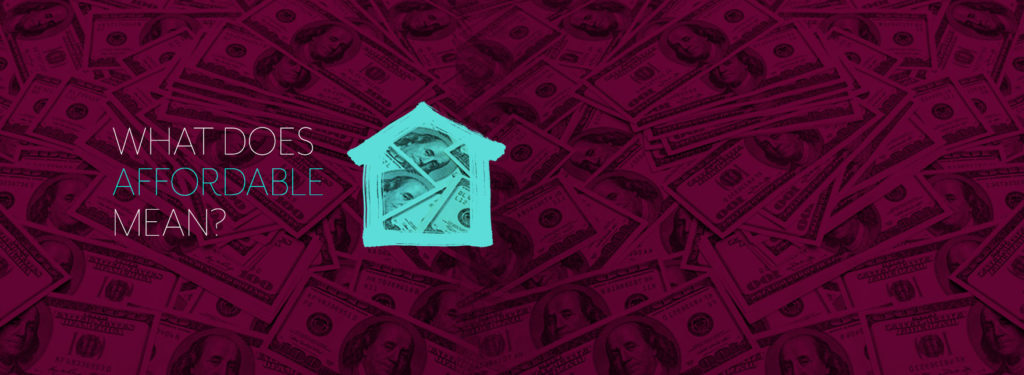What Does Affordable Mean?
May 16, 2019

By: Guest Author, Virginia REALTORS® Chief Economist, Lisa Sturtevant, PhD
The 28/36 rule of thumb says that a homebuyer should spend no more than 28% of her gross (i.e., before tax) monthly income on housing expenses, including mortgage payment, property taxes, and insurance. And total monthly debt should not exceed 36% of gross income. This is obviously only a guideline and a homebuyer’s specific financial situation affects the ultimate type of home and mortgage payment.
Indeed, there are many individual factors that need to be considered when determining whether something is “affordable” to a particular individual or family. It has been well documented in the research that when people spend too much of their income on housing, they often have too little left over for other necessities, like food, clothing, or health care, and quality of life can suffer. But how much is “too much”?
The federal government has set as a standard the 30% rule which states that a household should spend no more than 30% of total gross income on housing costs. This includes rent and utilities (for renters) or mortgage payment, interest, insurance and property taxes (for homeowners). However, there is a lot of debate about whether the 30% rule makes sense for all types of families.
One key criticism of the 30% rule is that it only takes into account housing costs and does not look at the second largest household expense—transportation costs. But there are obvious tradeoffs between housing and transportation costs in most markets. Homes that are closer to jobs and amenities tend to be more expensive, but transportation costs may be lower (e.g., shorter commute, only need one car.) On the other hand, homes further out may be less expensive, but that savings could be more than eaten up by increased commuting costs.
The Housing + Transportation (H+T) index allows you to look at the average combined housing plus transportation costs in communities throughout the country. For example, in Old Town, Alexandria (zip code 22314), the combined H+T index for an “average” household is 52%, with 42% of income spent on housing and 10% spent on transportation. By comparison, in the Marshall area of Fauquier County (zip code 20116), the combined H+T index is 49%, but the breakdown is 30% of income on housing and 19% of income on transportation.
How much an individual or family spends on a home depends on their personal economic situations. However, it’s important to remember that the housing costs are not the only factor in determining whether something is affordable.
For more information on housing affordability, please contact Dr. Lisa Sturtevant.
You might also like…
The Silver Tsunami: Its Impact on the Housing Market
By Abel Opoku-Adjei - January 30, 2025
The term “Silver Tsunami,” often referred to as “empty nesters,” describes the impending wave of Baby Boomers (individuals born between 1946 and 1964) who are approaching retirement. Baby… Read More
Key Takeaways: December 2024 Virginia Home Sales Report
By Virginia REALTORS® - January 22, 2025
Key Takeaways Market activity ended on a positive note as 2024 came to a close. There were 7,907 closed home sales across Virginia in December, 978 more sales… Read More
Key Multifamily Market Trends from the Fourth Quarter of 2024
By Sejal Naik - January 14, 2025
Each quarter, through its Multifamily Market report, the research team at Virginia REALTORS® analyzes the trends and changes in the multifamily market. Here, we share the key highlights… Read More